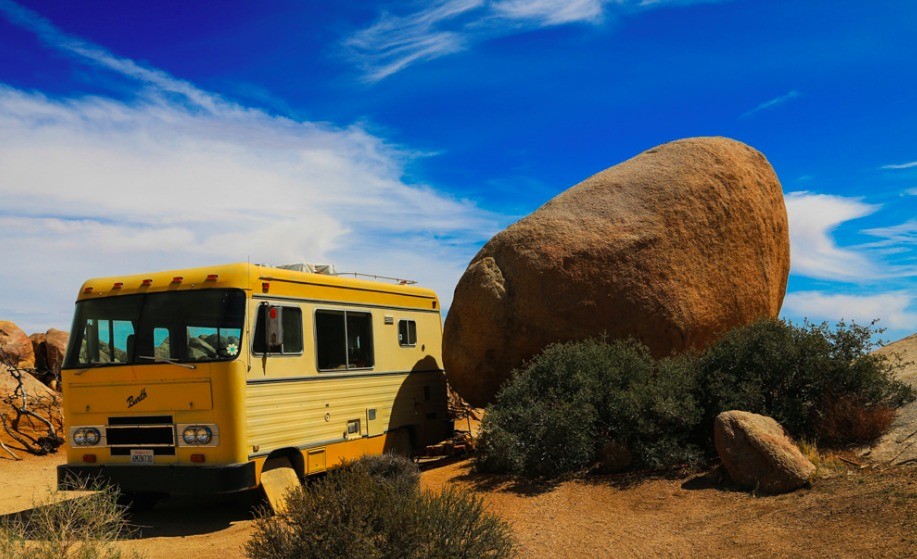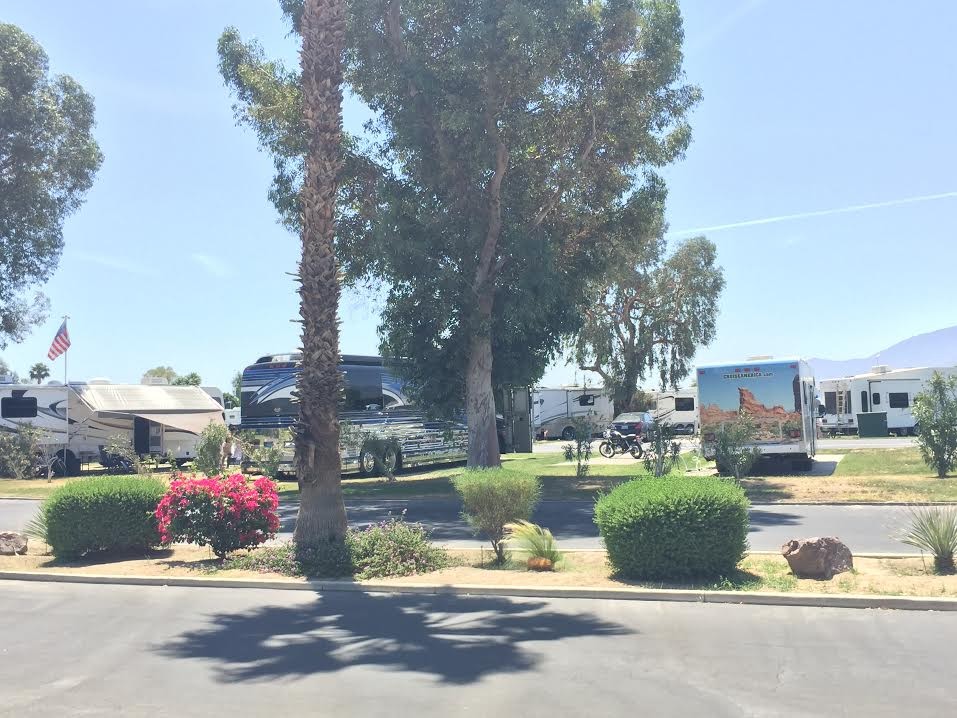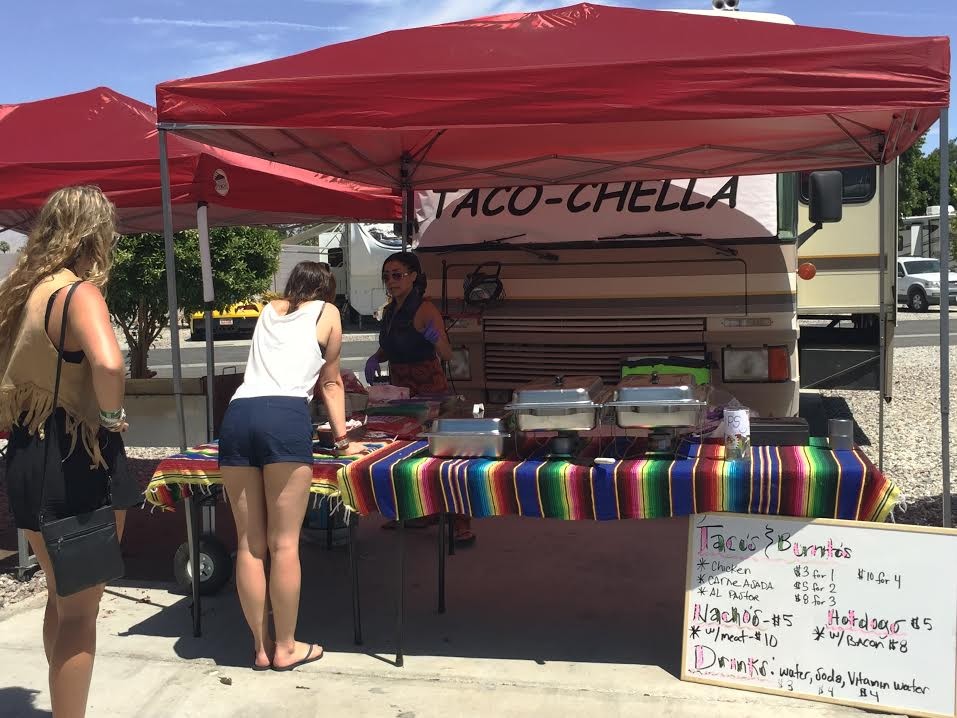 Camping at Coachella involves a decent amount of preparation. At this point, I should know. Of the three Coachella’s I’ve experienced, all of them involved some form of roughing it. In 2010 I went the standard onsite camping route. In 2014 I got a little more adventurous and tried camping by the Salton Sea. This year, I enjoyed weekend two Coachella camping at Indian Waters RV Resort, just three miles from the festival grounds. Other options like Indian Wells Carefree Resort, Happy Traveler RV, and Lake Cahuilla Recreation Area are somewhat nearby locations within the realm offering a range of overnight camping experiences.
Camping at Coachella involves a decent amount of preparation. At this point, I should know. Of the three Coachella’s I’ve experienced, all of them involved some form of roughing it. In 2010 I went the standard onsite camping route. In 2014 I got a little more adventurous and tried camping by the Salton Sea. This year, I enjoyed weekend two Coachella camping at Indian Waters RV Resort, just three miles from the festival grounds. Other options like Indian Wells Carefree Resort, Happy Traveler RV, and Lake Cahuilla Recreation Area are somewhat nearby locations within the realm offering a range of overnight camping experiences.
Having amenities and an affordable shuttle to and from was a major reason why Indian Waters looked so appealing, and the expectations were fully met, but only because as an experienced Coachella camper, I knew what to expect. Some people feel like just winging it, but for me, prepping and packing is all part of the experience leading up to the big day.
First thing on my list is always water. Big jugs of frozen water are the best items you can have at your site. Not only do frozen bottles keep whatever libations and snacks you brought nice and cool, but then there is also plenty of unfrozen ice to rehydrate Sunday and early Monday, especially after a long busy weekend of dehydration.
 Next consideration is always sleeping arrangements. Tents are not a great idea, as by 7a.m. you’ll be awoken to the feeling of being in a pressure cooker fueled by the intense heat of the Indio sun. Seeing as you are in the desert, and the evenings stay relatively warm, it is not necessary to have more than a pop-up tent with tarp panels to clip on that provide more privacy and shade. Get a comfortable cot or small blow-up mattress, take a sleeping bag, blankets and pillow, and voila! You’re set to sleep. During the daytime you can store them in your car that you’re allowed to park on-site. Most importantly—if you really are intending to sleep—make sure earplugs are on your list of must-have items.
Next consideration is always sleeping arrangements. Tents are not a great idea, as by 7a.m. you’ll be awoken to the feeling of being in a pressure cooker fueled by the intense heat of the Indio sun. Seeing as you are in the desert, and the evenings stay relatively warm, it is not necessary to have more than a pop-up tent with tarp panels to clip on that provide more privacy and shade. Get a comfortable cot or small blow-up mattress, take a sleeping bag, blankets and pillow, and voila! You’re set to sleep. During the daytime you can store them in your car that you’re allowed to park on-site. Most importantly—if you really are intending to sleep—make sure earplugs are on your list of must-have items.
Next is food. Surprisingly, there are quite a lot of businesses in the nearby downtown that offer a good selection of fast-food and sit-down style eateries. If you have the time, it is a good idea to get a good meal in before you start the weekend. Not only are you getting your body the nutrition it needs to weather the hot conditions, but you’re also supporting local businesses that rely on visitors for the bulk of their yearly income.
Once you’ve had your last big meal, it’s time to head to the campsite. Really there is no need to bring in grills, items that need major refrigeration, or huge coolers brimming with food. Instead, it’s all about snacks. Chips, trail-mix, fruit and veggies are the way to go. If you do plan on bringing edibles that require some cool temperatures, don’t go overboard, because the ice will be melted by Sunday, and that stuff with just go to waste. Instead, save your money for some meals inside the festival, and keep the campsite nibbles for the mornings and late-night snacking.
 Last part of preparation includes the “what-if” situations. Winds are the biggest what-if, and cause the most damage to campsites. If you have a tent or pop-up, nail them down proper. No one wants to leave midway through a festival day to go reinforce their campsite. Furthermore, you don’t want to be the one whose gear acted like a tumbleweed rolling through other’s campsite causing destruction, so be respectful and get it done right away.
Last part of preparation includes the “what-if” situations. Winds are the biggest what-if, and cause the most damage to campsites. If you have a tent or pop-up, nail them down proper. No one wants to leave midway through a festival day to go reinforce their campsite. Furthermore, you don’t want to be the one whose gear acted like a tumbleweed rolling through other’s campsite causing destruction, so be respectful and get it done right away.
Another major “if” is how hot the temperature is really going to be. Luckily at Indian Waters, they had a pool, water taps available on each campsite, and plenty of showers. Having handheld fans, mini-portable fans, and spray bottles are nice additions to keep cool. Last worry is always rain. If an unlikely storm strikes, just prepare to get dirty. You remember Woodstock, right?
Last item is how to get to the festival. Walking is not really possible, unless you want to hitch-hike. For some that might be the way to go, but I like to know I’m getting back to my site safely. Luckily, Indian Waters offered a shuttle pass that would take me there and back, up until 2am. At first I had considered Über, but quickly learned that the prices sky-rocket and are volatile due to the high demand of festival goers in need of a ride, and willing to pay $100 bucks to go right down the street. Worst-case, you should have a car to drive, but that means one person in your camp is given the role of designated driver, which defeats the point of attending a music festival for most people.
Overall, camping in close quarters, and leaving your items behind at the campsite, can be a little nerve-wracking. The idea of having some of your precious possessions stolen from your site is a lingering thought during preparation. The reality at Indian Waters was, however, was the opposite. Fellow festival-goers sharing space here shared a mentality with the intention instead to co-mingle in a friendly manner, share here and there, and respect each other’s setup. Each day heading to the festival grounds, I felt confident that I could return safely at the end of the night, and everything would be as I had left it.

